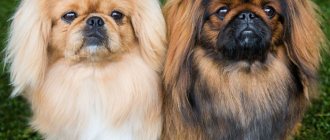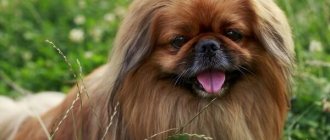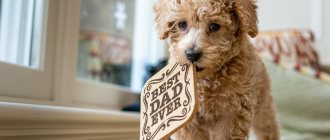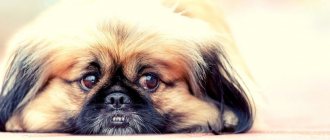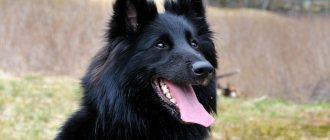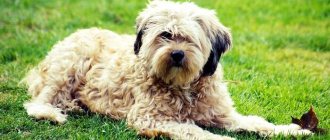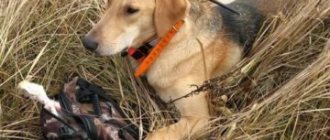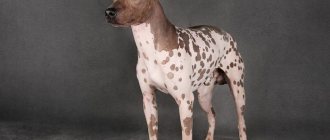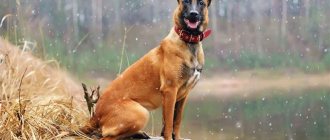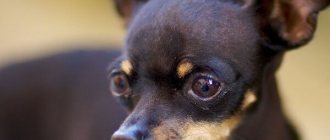Pekingese is a dog of Chinese monarchs , the history of the breed, the origin of which is shrouded in legends. Historians find the first mentions of dogs similar to domestic dwarf lions dating back 4 thousand years ago .
But it is, unfortunately, impossible to trace the origin of the breed with documentation, exactly when people decided to breed Pekingese. The breed is named “Pekingese” in honor of Beijing, where it comes from, and therefore the correct name for the dog breed is not “Pekingese”, but Pekingese.
In China, only the rich could keep these babies at home; ordinary people did not breed them under pain of the death penalty.
But history does not stand still, and in the 18th century the British, who captured the capital of China, took a liking to the appearance of the breed, deciding that these dogs should be bred in Europe .
Since the 19th century, Pekingese began to be bred in America , and at the beginning of the 20th century, the first clubs of this breed were opened and official standards were introduced.
Interesting Facts
The following interesting facts are known about the Pekingese:
- An ancient legend says that this breed is a descendant of a lion and a monkey. Therefore, the Pekingese is very proud and has a remarkable appearance, which is very reminiscent of a lion;
- the Pekingese has a short muzzle and does not tolerate the hot season very well, requiring special care measures;
- they actively dream, so they often make a variety of sounds in their sleep, which to many resemble snoring or snoring;
- by nature they are quite proud and somewhat arrogant animals, although they look very cute;
- a very peaceful breed that will not conflict with other pets, although it will not become too friendly with them;
- due to unscrupulous commercial breeding a couple of years ago, the breed suffered greatly; Pekingese puppies with unhealthy psyches and other diseases were sold;
- do not like intrusive physical contact, and in general there is more of it, they can bite in order to regain their personal space;
- The breed is passive, does not move too much, and does not require frequent walking.
Sample menu for the week
| Day of the week | Morning feeding | Evening feeding |
| Monday | Kefir (yogurt) + cottage cheese | Meat + stewed pumpkin + buckwheat porridge + flaxseed (olive oil) |
| Tuesday | Natural yogurt + cottage cheese + grated apple | Boiled liver + boiled carrots + vegetable oil |
| Wednesday | Ryazhenka (kefir)+cottage cheese | Meat + stewed zucchini + linseed (olive) oil |
| Thursday | Natural yogurt + cottage cheese + mashed banana | Boiled beef heart + boiled pumpkin + rice porridge |
| Friday | Kefir + cottage cheese + raw grated carrots | Boiled boneless fish + boiled carrots or zucchini + vegetable oil |
| Saturday | Natural yogurt + cottage cheese + grated apple | Meat + baked pumpkin + oatmeal + olive oil |
| Sunday | Kefir + cottage cheese + mashed banana | Boiled liver + boiled carrots + buckwheat porridge |
Characteristics table
The table below shows the main characteristics of the breed.
| Characteristic | Level (on a 5-point scale) |
| Aggressiveness | 3 (average) |
| Activity | 2 (low) |
| Training | 2 (problematic) |
| Shedding | 3 (average) |
| Care | 5 (high maintenance) |
| Friendliness | 3 (average) |
| Health | 2 (there are often problems) |
| Maintenance cost | 2 (low) |
| Attitude towards loneliness | 3 (normal) |
| Intelligence | 3 (normal) |
| Noisiness | 3 (average) |
| Security | 4 (good) |
Key points in training
The Pekingese is a decorative dog with an arrogant, proud disposition, so it needs to be raised from an early age.
- It is important to accustom the dog to a daily routine, regular walks and feeding regimen. In addition, all attempts to gain the upper hand over the owner must be stopped. However, rude methods are not encouraged.
- Pekingese are very touchy, nothing should threaten their self-esteem.
- An important aspect in education is the early socialization of the puppy. The more he interacts with people and animals, the less risk that an adult dog will become aggressive. It is better to walk in the company of dogs of similar size.
Knowing the basic commands is important even for lap dogs: “Near”, “Don’t”, “Place”. They must carry them out instinctively, unconditionally and quickly.
Read about how to properly train a dog in the article: “Training a puppy: effective methods from dog handlers, learning commands at home.”
History of the Pekingese breed
The original breeding country is the People's Republic of China. It was in this country that they were bred, and for a long time this breed was the favorite of the emperor. It is believed that more than 2000 years have passed since its origin. But only from the 18th century did it become known throughout the world. In China, this breed was often called Fu dogs, and was considered aristocratic, largely because emperors and various aristocrats preferred to own this breed. In China, there are many legends about Pekingese dogs, figurines and various attributes that can be purchased in stores and markets.
The origins of the Pekingese dog breed go far back to the Chinese regions. An image of a Pekingese was found in bronze dating back to two thousand years BC. Revered by Chinese emperors, the Pekingese was a sacred animal, and thieves of such dogs were sentenced to death. From 1860, some examples of Pekingese were brought to England, and one of them was given to Queen Victoria. The origins of the Pekingese are lost in ancient China, but research has found references to a similar dog as far back as 200 years BC. It is likely that the ancestors of the Pekingese were brought to China by Muslim traders who brought them from Malta. In Chinese mythology, the Pekingese is a cross between a lion and a monkey. It was this aspect of the Pekingese - the lionism - that breeders sought to breed in the breed. In the nineteenth century, Chinese emperors had a passion for this little dog and it was difficult to own. It was only in 1860, when the British and French sacked the Imperial Summer Palace in Beijing, that the first specimens were brought to Europe.
Since then the breed has experienced a significant boom in the UK, so the Chinese were brought in to curate the breed. The production of new dogs will remain in China under British patronage. The standard of the original Pekingese was published in 1987, and its official recognition dates back to March 26, 2009.
In the 18th and 19th centuries, it was impossible to see this dog walking on an ordinary street. She was carefully guarded, so she could only be found in the emperor’s domain. At that time it was simply impossible for an ordinary person to obtain such a breed.
In the 60s, a new Opium War began between the People's Republic of China, Great Britain and France, after which the emperor's castle was captured. The emperor fled, but the British found and captured the Pekingese in his palace. After this, this breed began to be bred in Europe. They received the name “Pekingese” in the UK, in honor of the city of Beijing, from which they were taken.
Nurseries in Russia and the CIS
In Russia, Pekingese can be purchased at one of the many nurseries:
- “Divine Flower” (Moscow)
- “From the Jasmine Palace” (Moscow)
- "Magri-Olifer" (Moscow)
- "San Ray" (Moscow)
- "Baltivskiy Kapriz" (St. Petersburg)
- "Elitlain" (St. Petersburg)
- "Ganko Saffi" (St. Petersburg)
- "Mirka" (St. Petersburg)
- "White Sun" (Chelyabinsk)
- "Image Dream" (Cheboksary)
- "Rumar Caprice" (Belgorod)
- "Savelina" (Novosibirsk)
- "Siberian Crown" (Krasnoyarsk)
In Ukraine, a dog of this breed can be bought in these nurseries:
- "Diantes Sanches" (Kharkov)
- “Julian Angel” (Vyshgorod)
- “Roman s Nadezhdoy” (Kharkov)
- “Waltz of the Flowers” (Dnepropetrovsk)
- "Eastern Dream" (Lutsk)
In Belarus, Pekingese can be bought at the Luchik Solntsa nursery, which is located in Minsk.
Contact details for nurseries can be found on their websites and social media pages.
Pekingese breed standard
In the 60s, when they were first brought to England, they were in many ways reminiscent of Japanese Chins, but over time the external difference became very noticeable. They began to weigh much more, their paws became shorter, and other differences appeared that made it possible to distinguish this breed from many others. To many people they resemble lions in appearance. You can always distinguish the Pekingese by its specific muzzle, which gives the impression that it is somewhat flattened. The Pekingese has slightly bulging eyes that resemble beads. A small, extremely neat tongue with a slight degree of roughness.
Now you can find two varieties of the breed: “sleeve” and standard. Unlike the standard one, the second version of the breed is more miniature in size and easily fits into the owner’s bag. As adults, they gain no more than 3 kg of mass. Females of this variant of the breed are not bred, since due to such a low weight they simply will not be able to bear future offspring.
Head
The Pekingese's skull is quite heavy, with flattened ears and clearly defined. Dogs of this breed have a short muzzle, noticeably stretched in width.
Mouth
The mouth is small in size, containing two rows of small but very sharp teeth. The teeth are always hidden behind thick lips.
Nose
The Pekingese has a rather funny nose, it is very wide and seems to be flattened. The lobe is distinguished by a rich black shade with some pigments. The dog's nostrils are wide.
Eyes
They are often very convex, so they require special care and handling (the dog should not be hit on the head). They are most often dark in color. Dogs of this breed with light eyes are extremely rare and are rather exceptions.
Ears
They are characterized by a high seating position and are often shaped like a heart. The fur on the ears is pleasant to the touch, very soft.
Neck
This breed has a small but very massive neck.
Body
In terms of size, the Pekingese is a small dog. The part in front is always more massive than the back, while the waist is clearly visible.
Paws
The paws of this breed are massive and very short; this is largely an individual feature of these dogs. The nails are quite long and require careful handling, otherwise the dog can damage the blood vessels. Bones have good strength, but still require careful handling, otherwise fractures may occur. The Pekingese is a passive dog; it walks slowly and majestically.
Tail
It is characterized by a high seating position and is slightly curved at the end. The tail is fluffy and extremely pleasant to the touch. The coat is approximately the same as that on the main part of the body, so it requires careful grooming.
Wool
This breed is very popular for its fur. It is soft, thick, long and pleasant. There is a lot of fur on the body, neck and tail. This coat needs careful care, at least twice a week, otherwise tangles and other troubles will form that will negatively affect the dog’s appearance and health.
Color
Nowadays you can find Pekingese in completely different shades, except for some shades of brown. Also, it is not normal to have an albino Pekingese.
Advantages and disadvantages
pros:
- Calm and balanced.
- Beautiful.
- Smart and quick-witted.
- Well trained.
- Not prone to mischief.
- Even very busy people can keep Pekingese, as these dogs are self-sufficient and do not need constant communication with their owner.
- Loyal, although their love still needs to be earned.
- Their small size makes these dogs suitable for small apartments.
Minuses:
- Arrogant and independent disposition.
- They are so fearless that they can get into a fight with a stronger and larger opponent.
- Not suitable as pets for families with small children.
- They are ambitious and have their own worldview.
- They can be stubborn and self-willed.
- They are predisposed to a number of breed-specific ailments.
- They need daily coat care.
Character of this breed
The Pekingese is an aristocratic animal, this is strongly visible in its character. He looks at his owner with some condescension, is in no hurry and does not like too harsh sounds. At the same time, he likes a calm environment where he is loved, but not too distracted from his important matters. The Pekingese is a rather selfish dog that requires love and care, but really does not like to be told off. She is inclined to harbor a grudge, and then can take revenge on the owner if he somehow treated her wrong. For example, he poked his nose into waste products that were outside the designated area. With this approach, the Pekingese will never do what the owner wants, but will definitely find a way to take revenge on him.
Unpleasant manipulations such as shouting, direct commands and attempts to evoke conscience will not work. The Pekingese will only do what it wants to do. That is why they need to be “commanded” with flattery. Otherwise, they will remember that they are descendants of a lion and will defend what they believe in to the bitter end. But don’t assume that this dog is a selfish hermit. She is a very loyal friend who loves to spend time with her owner. It's just a matter of mood. This is quite a positive point, since they can be safely left alone, they will not whine in longing for their owner, putting all the neighbors on their ears.
The animal has a certain line of empathy, and builds it with the owner. This line remains until the end of life. Therefore, the Pekingese will feel very well any emotional changes that the owner has. But at the same time, the Pekingese does not provide strong moral support, and does not come to be petted on the lap. If this happens, then you should think about the fact that you were sold not a purebred, but a mixed-breed Pekingese. Because the purebred Pekingese is very proud, and does not often come to people for such purposes.
It is worth repeating that the Pekingese is very selfish, and he does not tolerate love for other animals, which takes away the love of the owner from him. He does not conflict with other pets, as he considers this beneath his dignity, but he treats them with some contempt, and does not make too many friends with them, demarcating his territory. This is how he shows where his personal territory begins, which should not be penetrated. Sometimes he can provoke other animals by pretending that they started it. But, in general, again, the Pekingese does not seek to develop conflicts, largely because it assesses its own capabilities well in comparison with other animals.
This breed tolerates pain very poorly and does not like to endure it. For this reason, he is not very friendly towards children and tries to avoid them. He also doesn't like noise, and for this reason again avoids children. He is selfish, and prefers those who do not try to force him to strictly obey. The Pekingese can follow orders, but not directly, but rather based on flattery. He doesn't like a lot of physical contact, so you should be very careful when hugging your Pekingese.
The Pekingese dog is a little different from the dog world. This dog is very cold towards strangers, for example, towards children, whom the Pekingese does not like. For his owner, he will show love and even ingratiation towards him, but without doing too much. He recognizes affection for his master, but without great motives. Pekingese are not very obedient, but they are brave and loyal and can be a bit reckless.
If you tame it, it is a great pet and very friendly. His teachers are mostly single people, older people or couples without children who don't want to be out too long, which suits him just fine.
Theses
- Due to the structure of the skull, Pekingese dogs make different sounds and sometimes snore.
- Due to the structure of the eyes, they are prone to injury and can... fall out. In fact, this is a dislocation, but it terrifies owners and can have consequences if not contacted by a veterinarian in time.
- These small dogs have a complex character, one of the manifestations of which is independence.
- They get along with children, but only with those who respect them.
- They are difficult to toilet train.
- They usually love one person more.
- They tolerate heat extremely poorly due to their thick coat and skull structure.
- They get along well with dogs and other pets.
Education and training
This breed is difficult to train, this is the opinion that most people have. But in reality it is not entirely correct. Of course, this breed is very proud and willful, but with the right approach and perseverance they can be trained. However, you should not use the whip method, as it will only lead to offense on the part of the animal. It is better to use praise, as it has a better effect on him.
At the same time, you should be patient. Convince your dog to do what you want. Don't yell at her, as this will not lead to the desired result. Be careful, the Pekingese is a very proud and cunning creature, if you at least once bring him a toy yourself, then in his eyes you will become a submissive slave, whom he will not hesitate to use for his own purposes. Therefore, it is worth learning to combine the ability to flatter this dog so that it obediently follows orders, but also not to forget to show who is boss.
It is worth considering that the 5th month of a pet’s life is one of the most difficult, as the Pekingese becomes very active, almost uncontrollable. This does not mean that you don’t need to train him; on the contrary, you need to focus on training. But, it is important to understand that the animal will play around and will not want to follow orders, but you need to be persistent and continue to train it. Show more often that you are happy when the animal does what you want. This will give him the understanding that your orders are worth following, as they will be praised for it.
If anyone talks about special programs for this breed, then this is an outright lie. Training is the same as for other dogs. From the first month of life, it is worth teaching the dog not to take food from the floor, accustoming it to walks, and so on.
Nutritional features of an adult Pekingese
An adult Pekingese eats twice a day , and he likes to eat at the same time. Nutrition can be either natural or artificial .
If we are talking about what to feed a Pekingese with natural feeding, then the dog should receive additional vitamins selected by a veterinarian. Pekingese are fed meat (chicken, beef), which should be at least 50% of the daily diet, or do-it-yourself treats at home.
The rest is cereals and vegetables. These dogs love to chew carrots and apples. Dairy products allowed: yogurt, cottage cheese, kefir.
Advice! When choosing food for your Pekingese, consult your veterinarian and choose food for dogs of this weight category and with a similar coat.
It is forbidden to give salty, spicy and sweet foods , as well as food from your own table. It is important to ensure that your pet does not gain weight, which is why walks outside are so important for this breed.
The Pekingese dog breed is loved by lonely elderly people and homebodies . These dogs get along with children, but it is better if the child is already a teenager, since excessive attention to a small child can make the dog jealous. The Pekingese loves his owners' favorite and seeks attention, so be prepared to devote a lot of your personal time to him.
Maintenance and care
The Pekingese is considered an aristocratic dog, but in fact requires about the same care as other decorative dogs. A simple blanket, neatly laid in a corner where there are no drafts, will suffice. You should not place the dog bed near heating devices, as the Pekingese can easily overheat. In addition, you need two bowls for food and water, a collar with a leash, diapers and a special toilet with suitable filling. Toys for the development of the Pekingese should be purchased in moderation, and not in huge quantities.
They are quite passive, so long walks with this breed are not necessary. It is enough to go out with them for a walk twice a day for 30 minutes. At the same time, do not forget that this breed does not tolerate the hot season very well, so in the summer it is better to walk with them early in the morning or late in the evening so that the dog does not overheat. Severe frosts are also unsafe for a dog; it is better to insulate it or stay at home so as not to get sick.
Very often the breed has problems going to the toilet. They can shit outside of it in the most unexpected place. A Pekingese may continue to do this even if it has been toilet trained. This problem can be solved by removing objects that the dog shits on, or by blocking off the part of the apartment that the dog has made her toilet. At the same time, you should not poke your dog’s nose into its waste products; this will not force it to change its behavior, but will make it more vicious.
Hygienic points
It is important to consider that this dog has a specific coat that looks very soft and fluffy while the dog is a puppy, and changes by 4 months. For this reason, it is important to brush your dog thoroughly to prevent its hair from matting, and to moisturize it with conditioner to prevent the hairs from becoming too brittle.
This breed does not need to be cut or trimmed; simple brushing is enough for them, especially if the dog will not actively participate in exhibitions. In this case, its coat can be shortened a little so that it can more easily tolerate hot conditions.
Pekingese need to be bathed rarely unless there is a real need. Frequent bathing will not benefit the coat of this breed. If the dog gets dirty, it is better to eliminate the contamination locally using dry shampoo-powder. If you walk your dog in the rain, you should definitely wear a special overall that will protect you from the rain.
Particular attention should be paid to the ears, eyes and nasal fold of the Pekingese. It is necessary to check their condition at least once a week. If there are no strange odors there, then there is no cause for concern, and it is enough to simply remove earwax and other contaminants with a cotton swab. This should be done with great care so as not to harm the dog. If you smell a strange odor or notice that your pet is frequently shaking its head, you should immediately contact your veterinarian.
Eye diseases are the most common in the Pekingese. This is especially true for dogs that have excessively bulging eyes. To reduce the risk of disease or injury, do not pat the animal on the head, and you should also rub the eyes frequently. Phyto-lotions or a solution of boric acid will help with this perfectly. Always make sure your Pekingese doesn't have any discharge from its eyes. Their appearance is a reason to promptly contact a veterinarian.
Like the eyes, the fold on the muzzle requires special care. Tear fluid often accumulates in it, which creates an unpleasant greenhouse effect. In order to avoid this, you should carefully pull the skin several times a week and wipe it with a dry cloth that absorbs moisture well. In addition, it is recommended that this breed’s claws be filed down as they grow, this reduces the likelihood that blood vessels will be damaged.
If you often walk your dog, it is best to sew special slippers that will absorb moisture, and also use special protective creams, this will help avoid cracks and other problems with the paws.
Feeding
Meat with low fat content, turkey and chicken should be included in the dog’s main diet. Foods with bones should not be given to her as they can cause injury. The Pekingese can only occasionally be pampered with soft cartilage.
If you remove the fatty films, you can give the dog raw or boiled tripe. As a separate dish or in combination with other products. Eating fish is very healthy, so your dog should be given it twice a week. Once a week, you can give your dog a hard-boiled egg yolk. In this case, the amount of food should be calculated based on the age and weight of the dog.
Porridge can be fed to dogs of all ages. In this case, it is allowed to use oatmeal, millet and rice porridges. In many ways, the type of porridge should be determined based on the individual preferences of your pet. If you decide to feed your dog vegetables, then it is best to stew them, but occasionally you can give them raw vegetables. You can give any fruit except strawberries, kiwi and pineapple, as they contain harmful substances that can harm the dog’s health. It is definitely worth giving low-fat fermented milk products, as they have a positive effect on the dog’s health.
If your dog sits at home most of the time and gets minimal walks, then it is worth adding additional vitamins and minerals to his diet. But you shouldn’t thoughtlessly purchase them from the vet. pharmacy. It is better to buy what the vet recommends.
Owner reviews
“I have known this breed for 12 years. Looking at our Shustrik, it seems to me that the ancient legend was confused and the Pekingese came from the love of a lion not with a monkey, but with a pig. This dog is very funny and funny. However, you can’t laugh openly at our dog - he might get offended.”
Victoria Moiseeva, Moscow.
“Initially, my husband was against having a dog in the family. But when he saw the Pekingese, he melted, and this cheerful creature has been living in the house for six years now. This is a very smart dog and never craps in the house. We only had a couple of cases when he was just a puppy. We rarely bathe twice a year, but we wash our paws often, especially in the spring and autumn. Rarely gets sick. Maybe a couple of times a year it happened that my tummy hurt, but everything went away on the second day, so I didn’t go to the veterinarian often.”
Olga Kovalchuk, Voronezh.
“We took our Pekingese as an adult. At that time he was already 2 years old. Until his old age, he was a hooligan with a royal character. He treated children well, friendly, and allowed himself to be stroked and hugged. However, if a child, being naughty, pulled him by the paw or caused pain, he could bite him lightly. Our brownie often sticks out his tongue and snores while sleeping. And how funny he sneezes!”
Margarita Goncharova, Yekaterinburg.
“I have never seen a cuter and funnier creature. Our Sophie lived for 14 years and died in 2010. Tears still come to my eyes. I was given Sofa for my graduation in kindergarten and now, as an adult, I want such a dog again. I highly recommend getting Pekingese, as they are kind, sincere and always feel when their owner is feeling bad. I’m reminded of the words of Wilfred P. Lampton, “Anyone who says you can’t buy happiness has never bought a puppy.”
Valentina Kranga, Yekaterinburg.
Pekingese health and diseases
The most common diseases of this breed: urethritis, problems with heart valves, displacement of intervertebral discs, the formation of tumors on the perianal gland, various eye diseases.
If you regulate your Pekingese's diet, if you clean his delicate eyes well, if you brush his teeth, which are his weak point, you can keep your Pekingese for up to 15 years. It's not much compared to other dogs, but you have to take care of it. A small dog with long hair, it carries all the dust from your apartment with it, and its good health depends on its maintenance.
Pathologies and common diseases of the Pekingese
The Pekingese is a very healthy dog, and according to the 2014 Kennel Club Purebred Dog Health Study, about three-quarters of the animals studied were not affected by any disease. The main causes of death were old age and brain tumors. Like other purebred dogs, Pekingese are susceptible to developing hereditary diseases. These include congenital dislocation of the elbow, distichasis, ectopic testicles, inguinal and umbilical hernias.
Congenital dislocation of the elbow
Congenital elbow dislocation is a relatively rare condition. It is characterized by displacement of the bones of the elbow joint, ulna, and is accompanied by rupture of the ligament. Between four and six weeks of age, your dog may develop lameness and elbow deformity.
X-ray examination confirms the diagnosis. Surgical treatment should be started as soon as possible and consists of returning the joint to its natural position before temporarily immobilizing it in that position using a cast.
Distichiasis
Distichiasis is characterized by an additional row of eyelashes in the area of the meibomian glands, which secrete a protective fluid for the eyes. Depending on the amount, texture, and friction on the eye, this extra row may make no difference or may cause keratitis, conjunctivitis, or corneal ulcers.
Pekingese care
The Pekingese is great for indoor living; it is not a breed that needs long walks or exercise. The dog will be happy to walk with you to the store, sit on a bench in the park, or walk sedately along the alley. Pekingese can run and frolic, but they do it for pleasure and according to their mood, and not on every walk. The Pekingese coat consists of two types of hair: long and coarse, and short and fine - undercoat. These dogs should be combed and combed as often as possible; this, firstly, makes them beautiful, and secondly, prevents their fur from rolling into tangles. On the paws, around the pads, the hair is trimmed, the claws are trimmed, and the folds on the bridge of the nose are wiped. Periodically, the dog is bathed with shampoo. The diet should be complete and balanced; Pekingese are very picky, so it is important to choose the type of food that the dog will eat with pleasure and at the same time receive all the necessary nutrients. Pekingese are characterized by some diseases, such as ectropion or cataracts, respiratory diseases, problems with the spine and musculoskeletal system, and heart failure. For breeding, it is preferable to take young females, even from their first heat. An older dog may die in childbirth if it is not given a caesarean section.
How to choose a puppy?
Some tips for choosing a Pekingese puppy:
- boys and girls have approximately the same character, but boys look more beautiful and shed less;
- Before choosing a puppy, you should look at several litters to choose the most suitable puppy;
- if you take a puppy for exhibitions, then you should take a six-month-old puppy, since during this period it is more clear what he will be like in the future;
- Be sure to look at the puppy’s parents, this will allow you to understand how the puppy will grow up. If the mother does not have a shiny coat, this may be a temporary postpartum phenomenon, ask for a photo of the mother before birth;
- be sure to ask what vaccinations the puppy has already had, and whether they have wormed;
- check for the presence of a mark from a professional nursery;
- If you buy a puppy based on a photo, then discuss the possibility of returning it in case the reality does not coincide with the photo presented.
Distinctive features
The Pekingese is a small dog that really resembles a lion. She has a similar mane, head posture and gait: proud and majestic. Initially, these dogs had many similarities with the Japanese Chin, but after 150 years of breeding work they acquired their own striking appearance.
Now the standard allows height variation from 15 to 25 cm, and weight from 3.5 to 5.5. But in China, the most miniature dogs were specially bred. For this purpose, the pets were kept in cramped cages and given wine to drink.
All dogs that do not meet the new standard (2009) are discarded.
- The head is large. The skull is wide and flat. The stop is well defined .
- The muzzle is short and wide, always black. The lower jaw is well defined and strong. The bite is not described by the standard. The lips are located at the same level, quite fleshy, and fit tightly to the teeth. Pronounced chin .
- The nose is short and wide. Characteristic is a small fold from the bridge of the nose to the cheekbone line.
- The eyes are round, protruding, quite large, and set wide apart. Color – dark.
- The ears are set high and wide, hanging near the temporal bones. Shaped like a heart, in adult dogs they do not extend beyond the bottom line of the muzzle. Long wool fringes are characteristic.
- The body is short and seems heavy. Straight top line . The chest is well developed, quite wide and deep (to the middle of the elbows). The neck is short and thick.
- The tail is set high, touching the back (curled to the side), with long, straight hair.
- The limbs are short and crooked. The hind limbs are lighter than the forelimbs. The paws are set obliquely (slightly turned outward), flat, with thick toes. The movements are leisurely and proud.
- The coat is quite long, thick, and forms a mane on the neck.
- Colors: All colors are acceptable except liver and albino.
Briefly about the main thing
- Bred over 2,000 years ago, the dog has undergone few selective changes. She remained just as proud and brave.
- The breed requires care and a lot of time.
- The Pekingese is a magnificent guard with a chic appearance of a “little lion cub” with a cross between a monkey and will charm lovers of the East.
- Large eyes in the form of large beads with a human look, full of sympathy, evoke tenderness and delight.
- The breed will appeal to unhurried, attentive owners who need a devoted pet with protective qualities.
Write in the comments, do you like Pekingese? Share your experience caring for this breed.
Did you like the article? Share it with your friends on social media. networks. This will help them get useful information and support our project.
Feeding
For high-quality nutrition for your pet, it is necessary to create all the conditions. What is the optimal diet? Dog lovers advise enriching their diet:
- vitamins (fresh vegetables, fruits);
- proteins;
- carbohydrates and fats in minimal quantities.
There should always be a bowl of water. Puppies can be given milk for drinking, but try to switch to fermented milk products due to an allergy to lactose.
Holistic feeds that focus on natural ingredients are considered effective. Foods from the “premium” and “premium-lux” groups help in the development and growth of your pet. Optimally 2-3 feedings per day.
You can feed cheaply, but remember that such food is completely artificial. The Pekingese eats a lot, but remains hungry. Such species negatively affect the quality of wool and general well-being.
Character and behavioral characteristics
The Pekingese, which is cute in appearance, is naturally designed to protect. The dog itself will choose “its owner” in the family and will perfectly obey his commands. Common behavior is to follow household members. The companion dog loves to sit near the feet, surrounded by family. He happily meets people he already knows, jumps into his arms, and licks them.
The breed is not known for its excessive love for children. They do not tolerate loud sounds or screams, and will actively react to such behavior by growling and barking.
A pet of another species (cat, rat) is not a hindrance for the Pekingese. He enjoys making friends, joining in games and having fun fights.
The ideal owner for them is a leisurely person who is not in a hurry.
The Pekingese is for those who truly appreciate their greatness, royal behavior, and regal habits. It is necessary to understand the peculiarity of the origin of the Chinese breed.
Mating, pregnancy and childbirth
To continue the purity of the pedigree, a mating partner must be chosen in another region or country. This will help avoid the spread of genetic diseases and eliminate closely related relationships.
Mating occurs during the “rut” or “hunt” in the female, 9-12 days from the start of estrus. The female bears fruits for 2.5 months. Multiple births are more common, with 3 to 6 kittens in one litter. The Pekingese breed are good mothers who do not refuse to feed their offspring, carefully look after them and take care of them.
Tips for choosing a puppy
Males and females of this breed differ slightly in temperament. But boys, who shed less, look more attractive. Additional shedding of bitches is associated with estrus and childbirth.
When buying a puppy, take your time. Often a cute mestizo with a damaged psyche is passed off as a purebred animal. You should look and compare babies from different nurseries or from different private breeders.
Remember that the animal’s full appearance is revealed by the age of six months. The choice must be made consciously, paying special attention to the eyes. Excessive protruding eyes can further lead to injury or loss of the eyeball.
After giving birth, the bitch sheds. Ask for a photo of her before mating to fully appreciate the dog's appearance. You should not choose a puppy in absentia based on the picture and description on the website. It is better to be present during the choice, inquire about the vaccinations given, and find out whether the baby has been dewormed.
Pekingese puppies from the litter should be active, inquisitive and in no case shy or aggressive. Take the time to get to know your future furry family member.
Price and where to buy a puppy
Puppies or adult dogs are divided into categories:
- breeding for show classes, from which it is planned to obtain offspring for the purposes of breeding, sale, they perform at exhibitions of various ranks, receive awards;
- without pedigree, when there was an unplanned mating, with minor developmental defects.
Each nursery plans the price for a breeding puppy. It consists of the pedigree and merits of the parents, location. The problem lies in the dishonesty of breeders if the breed becomes “fashionable”.
Don't think that selling through classifieds is a reliable method. This is how they get rid of culled offspring that do not meet the standards.
The price for a puppy without claims to a pure pedigree starts from 5-7 thousand rubles. For a show dog you will have to pay about 500 USD.
